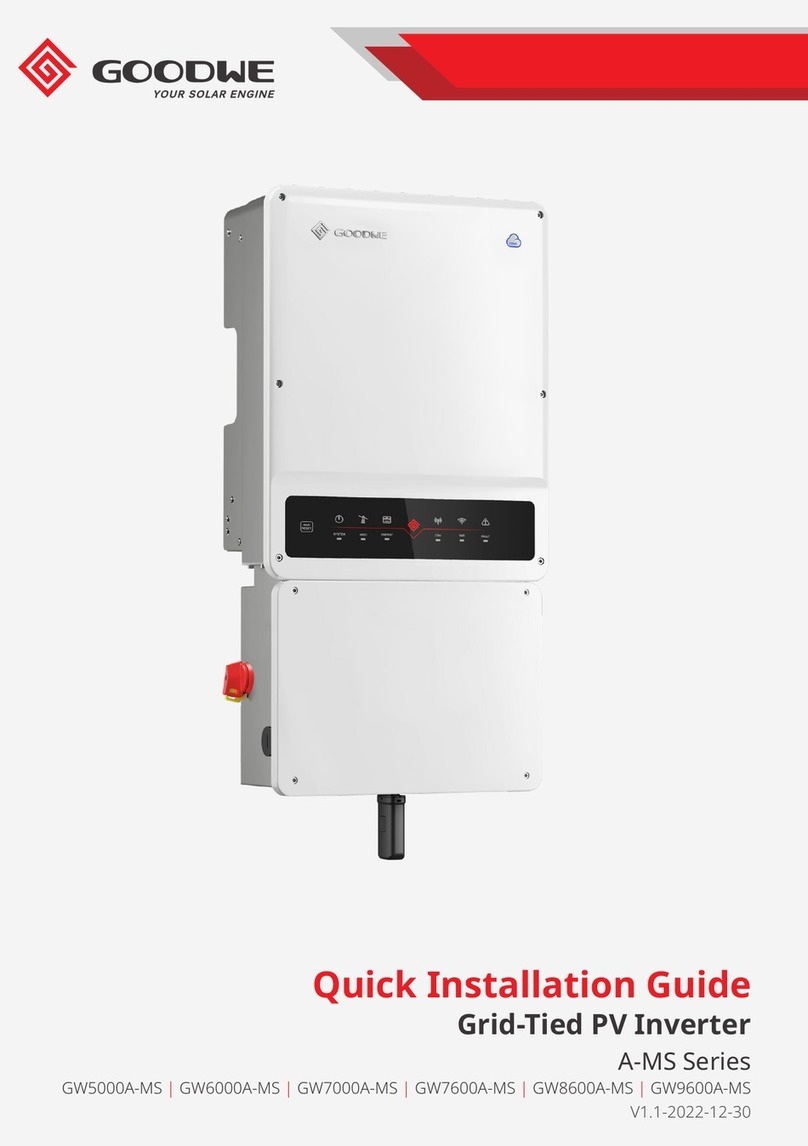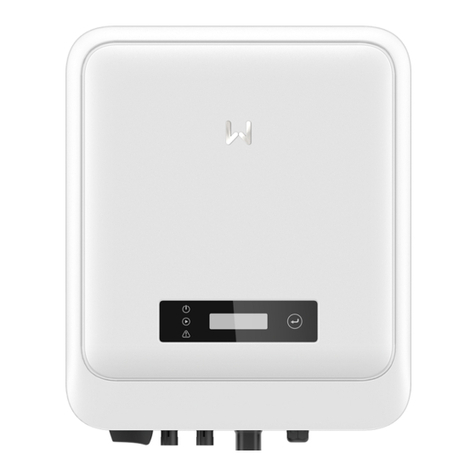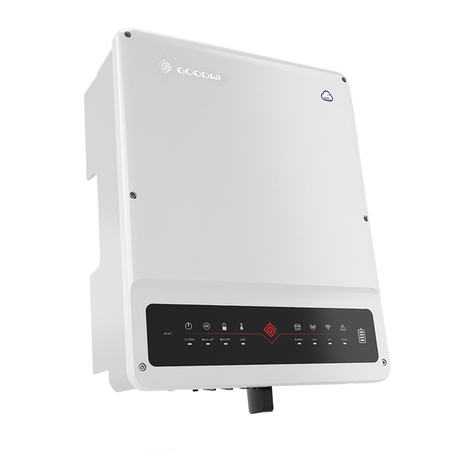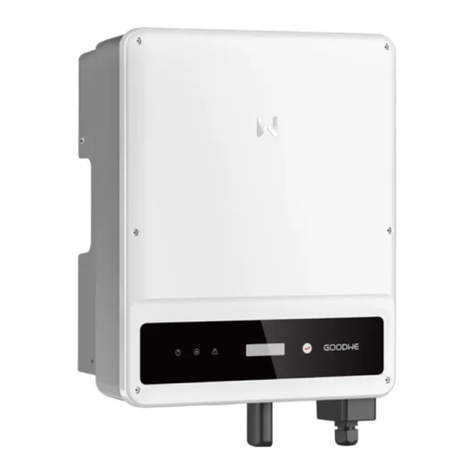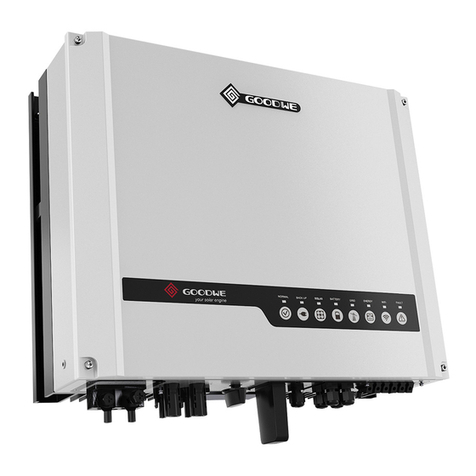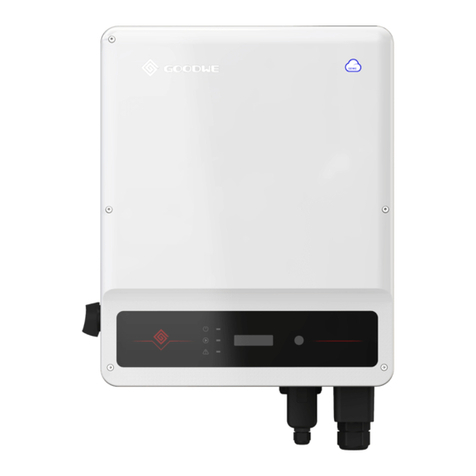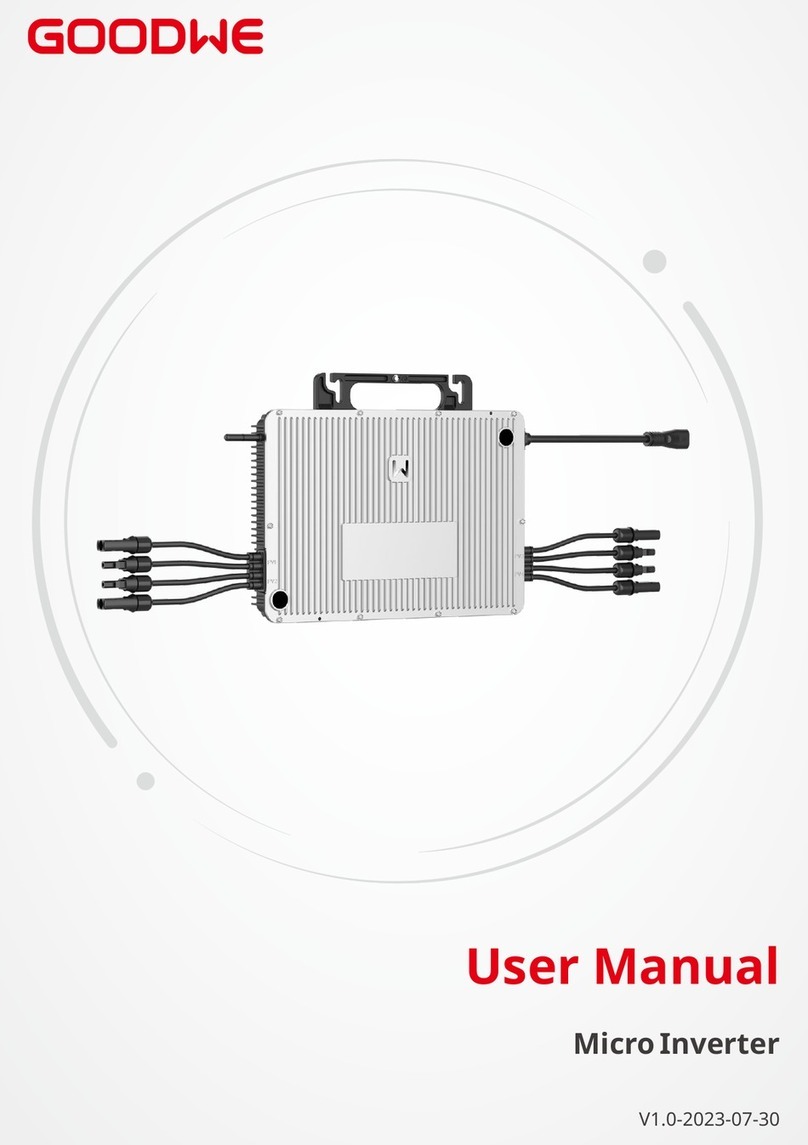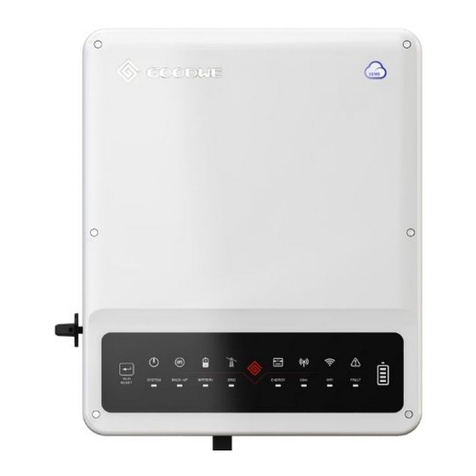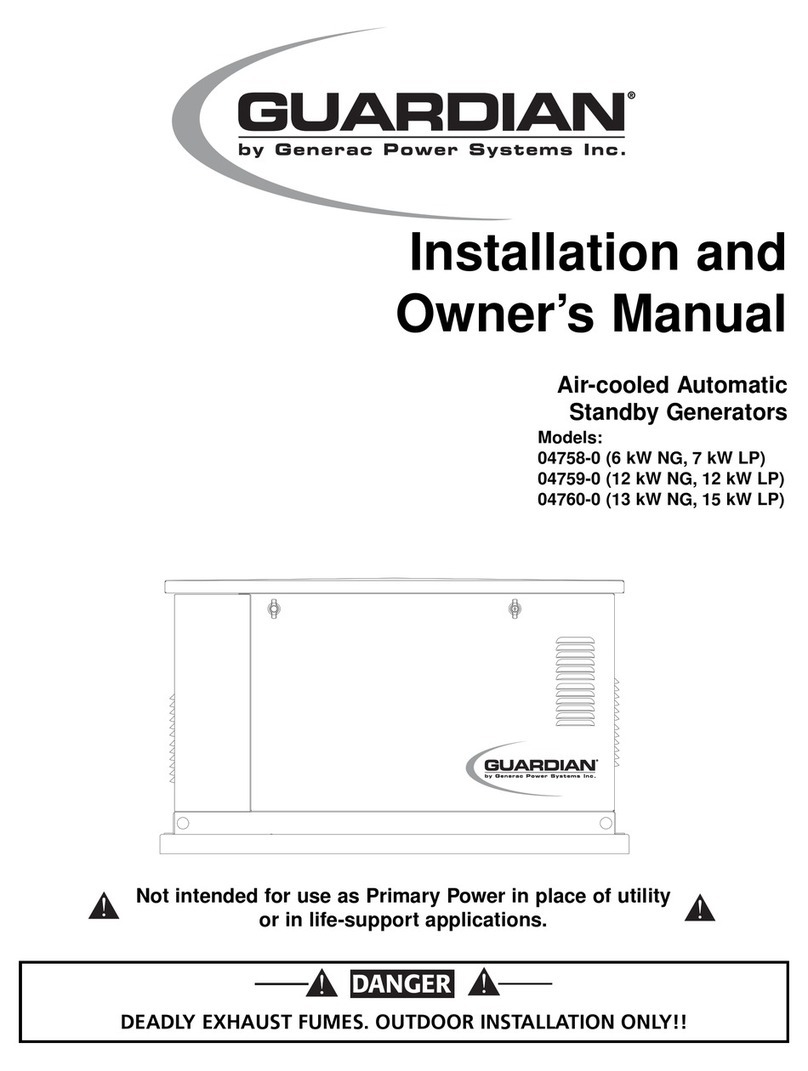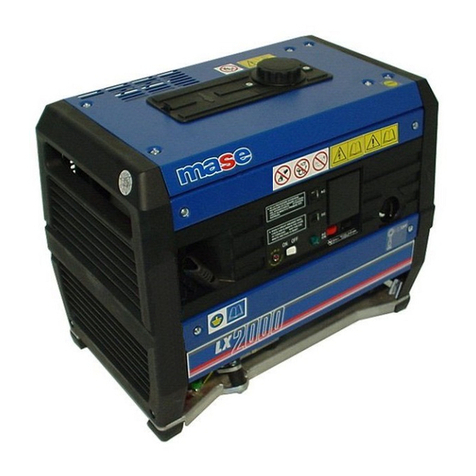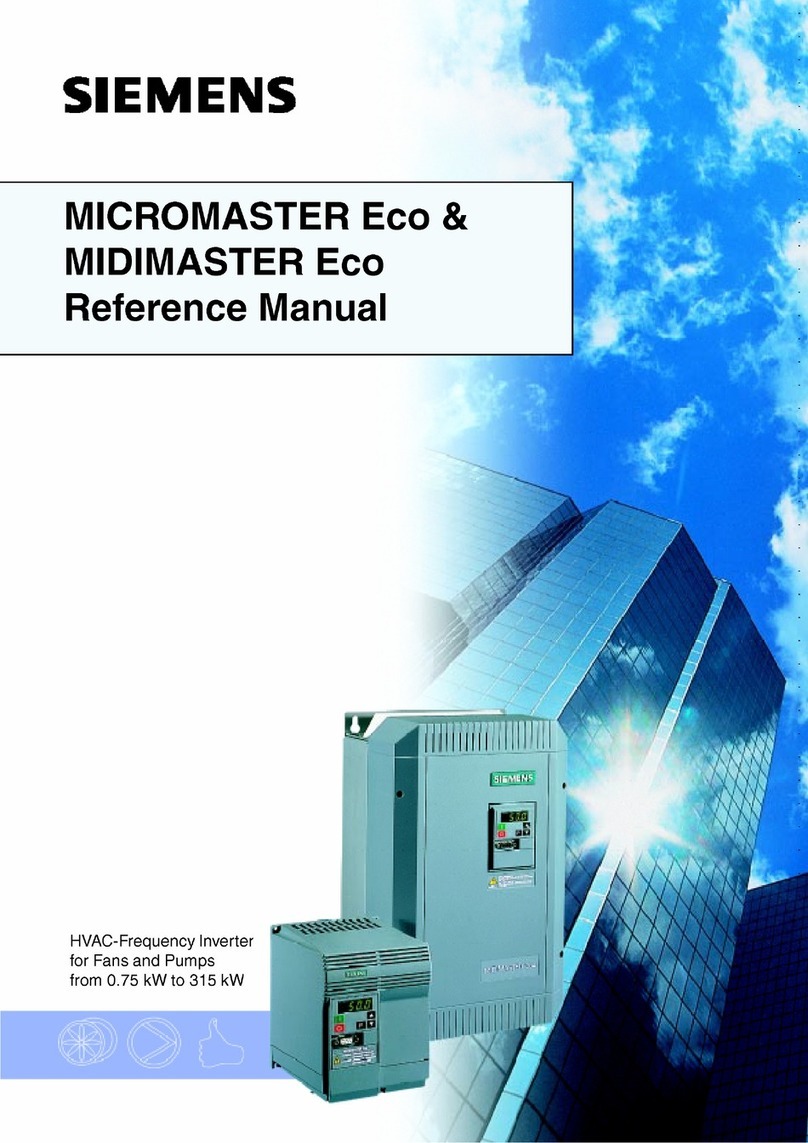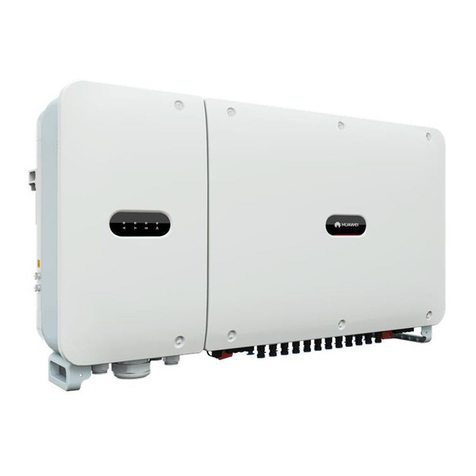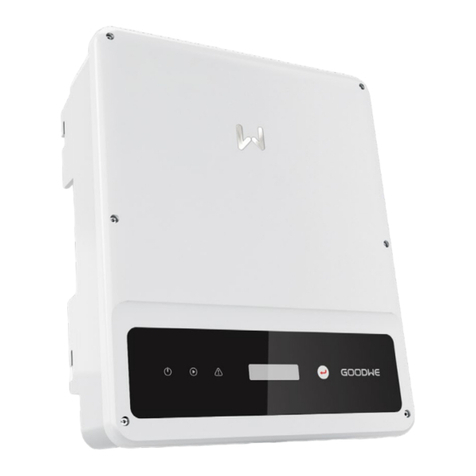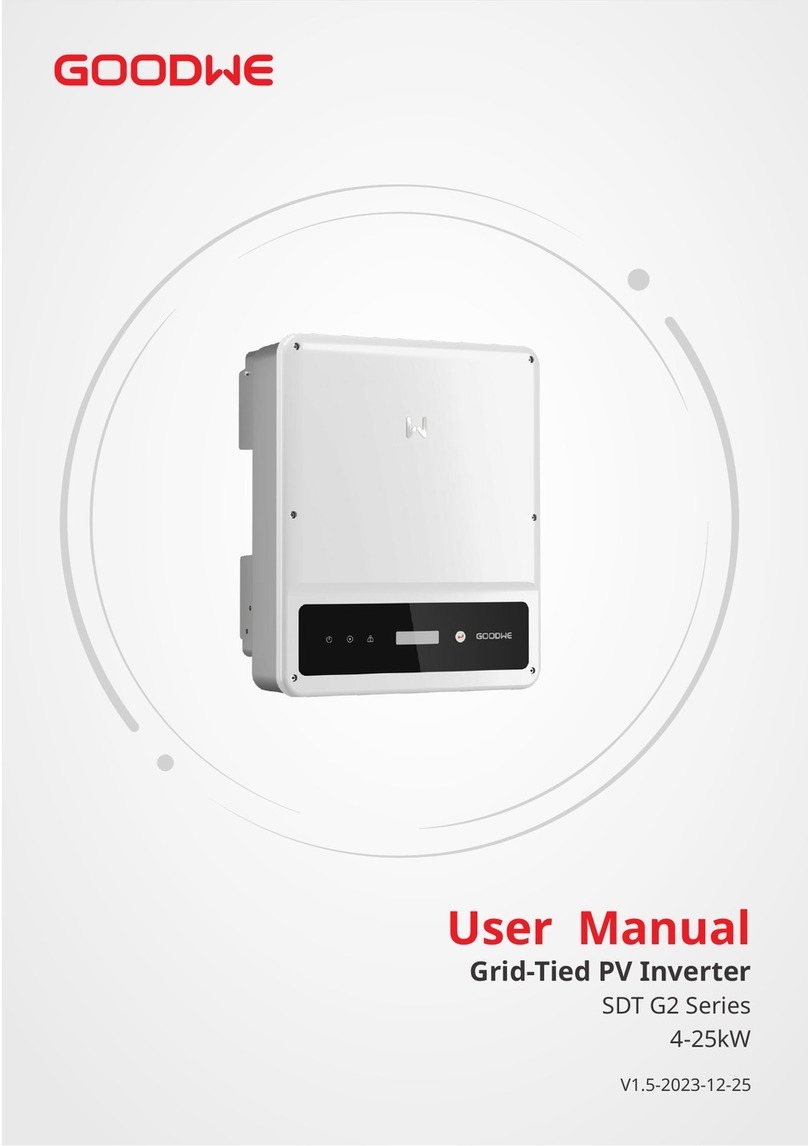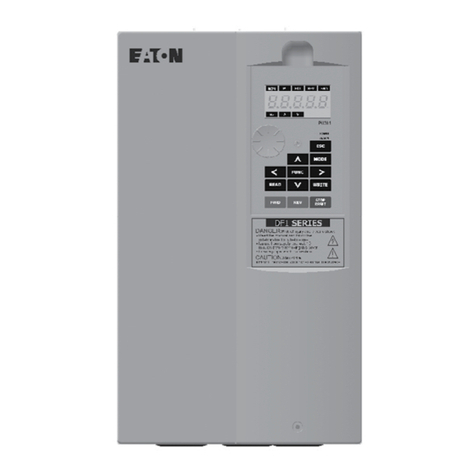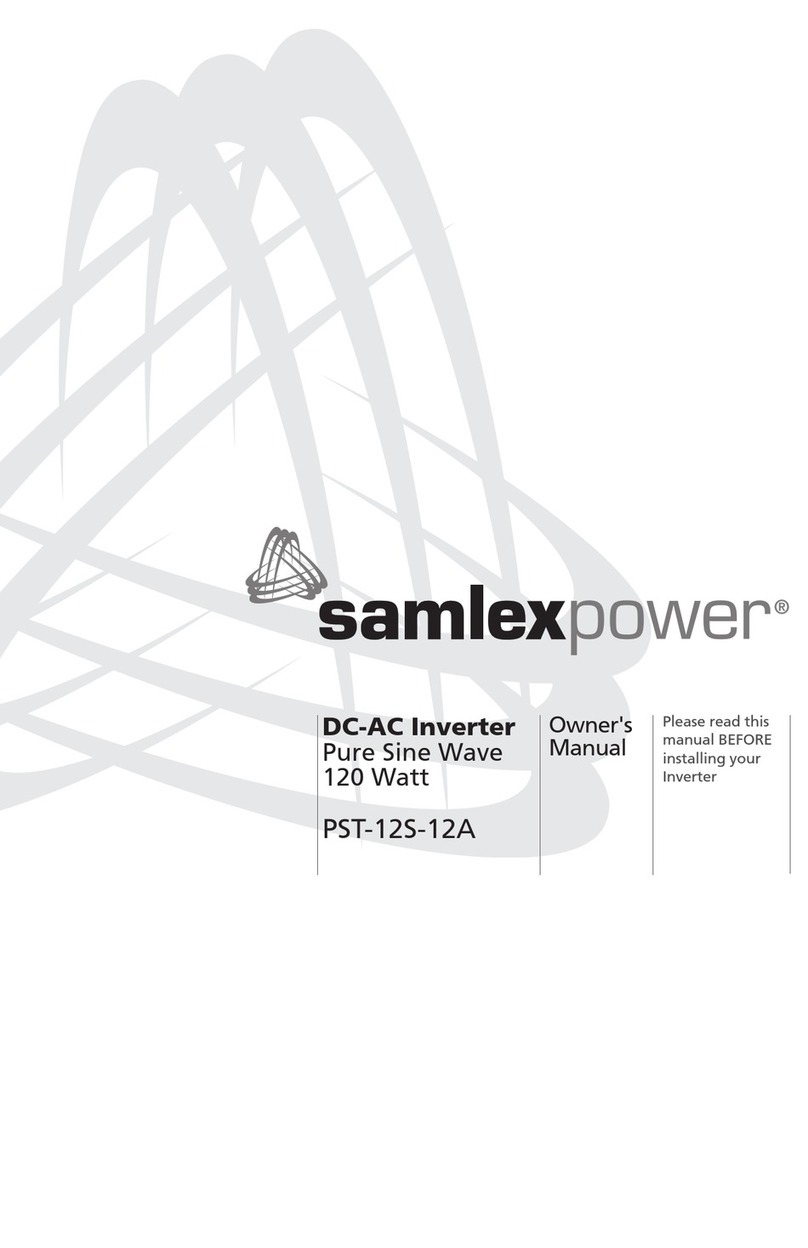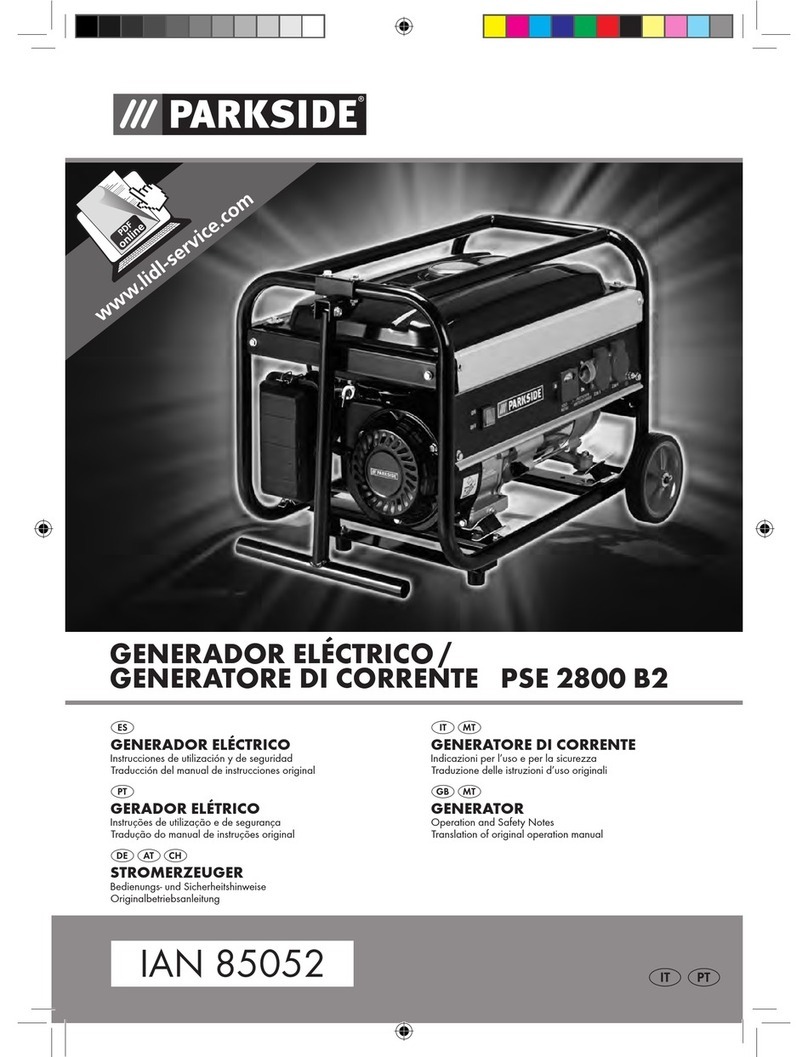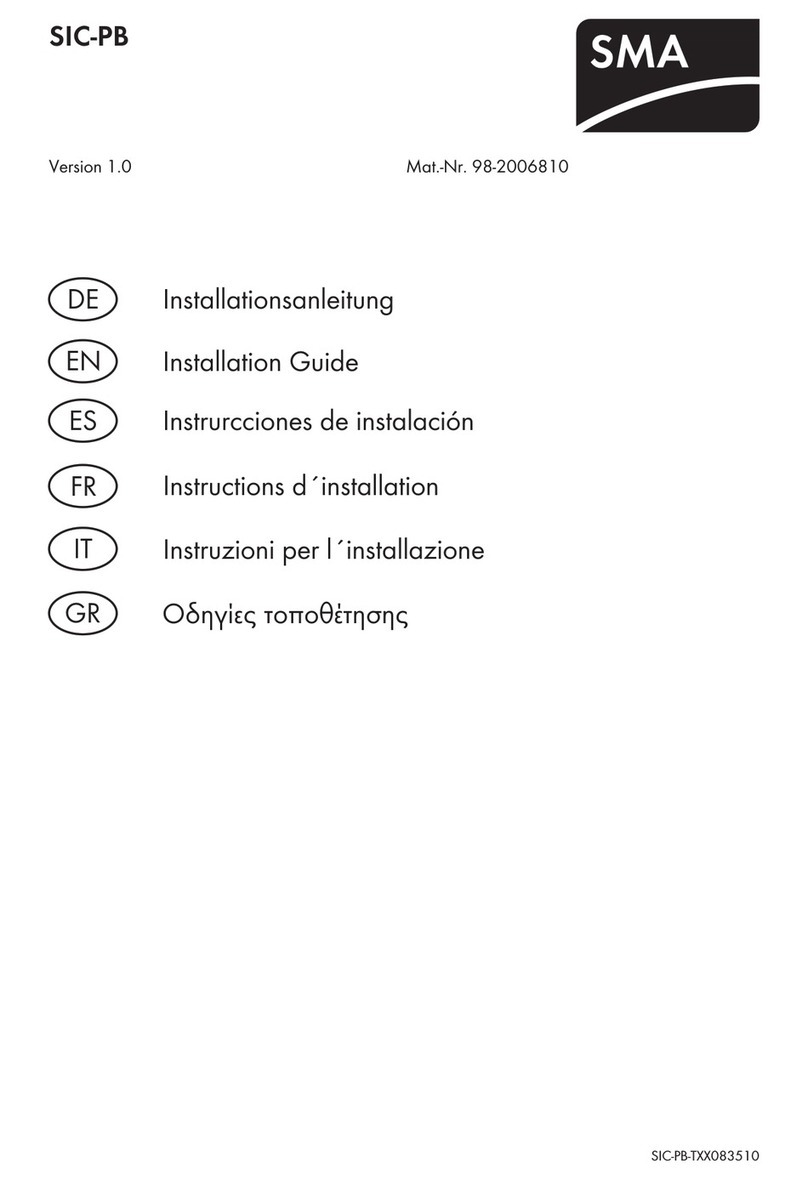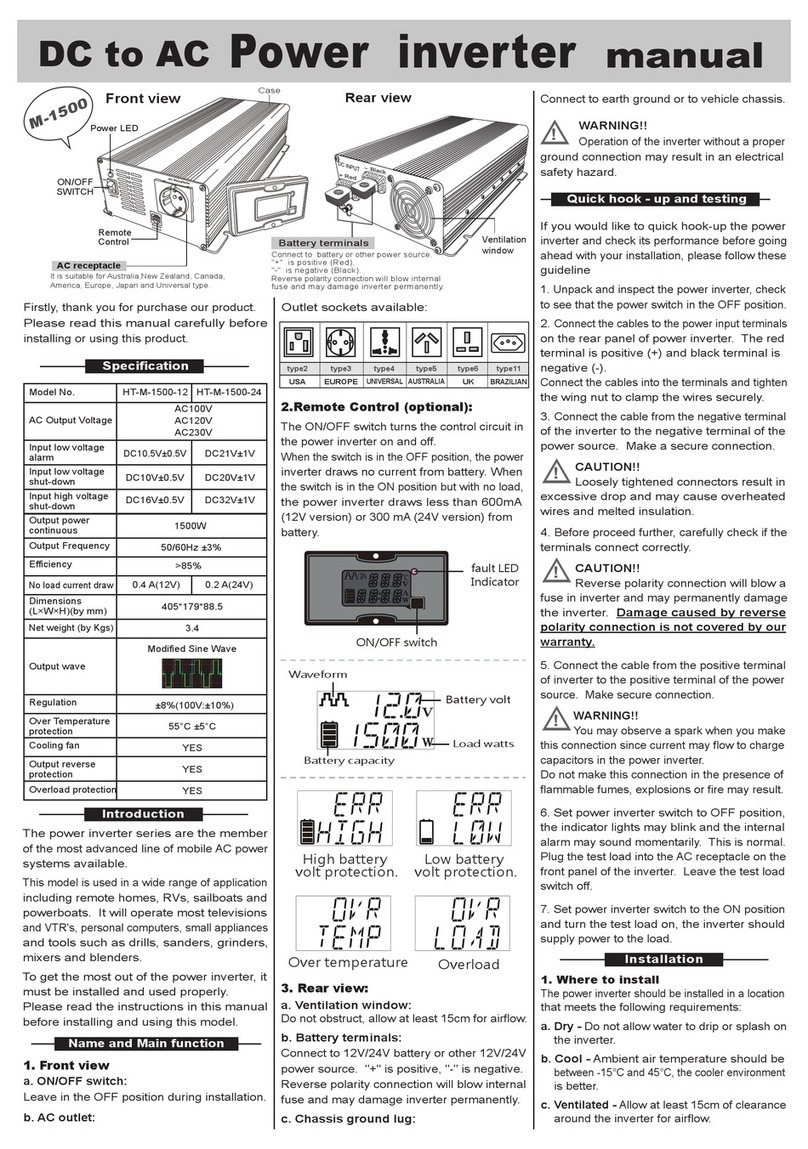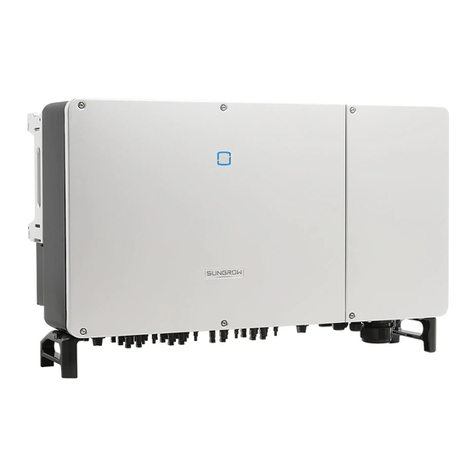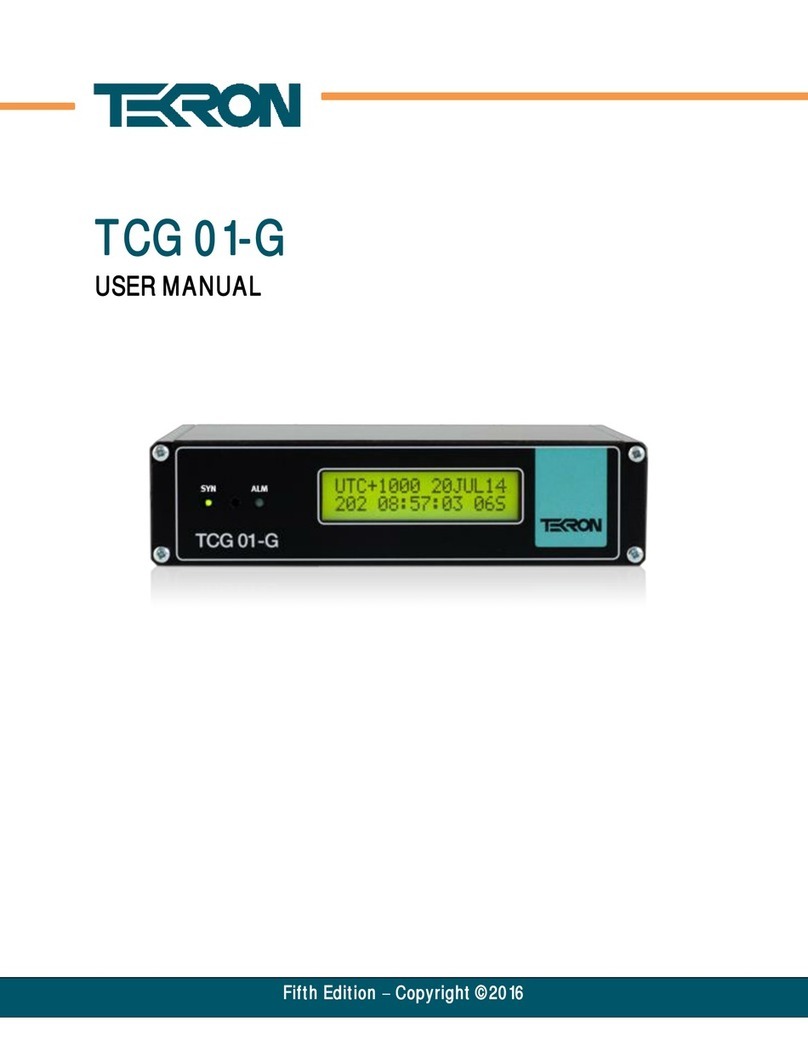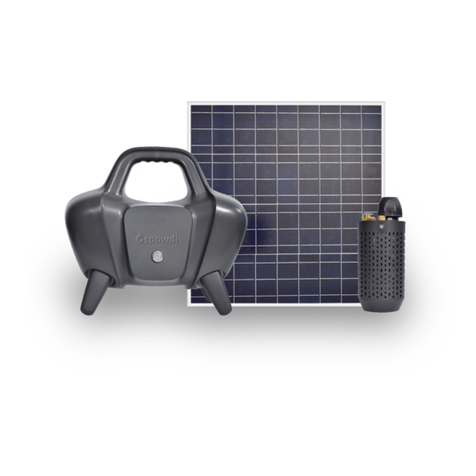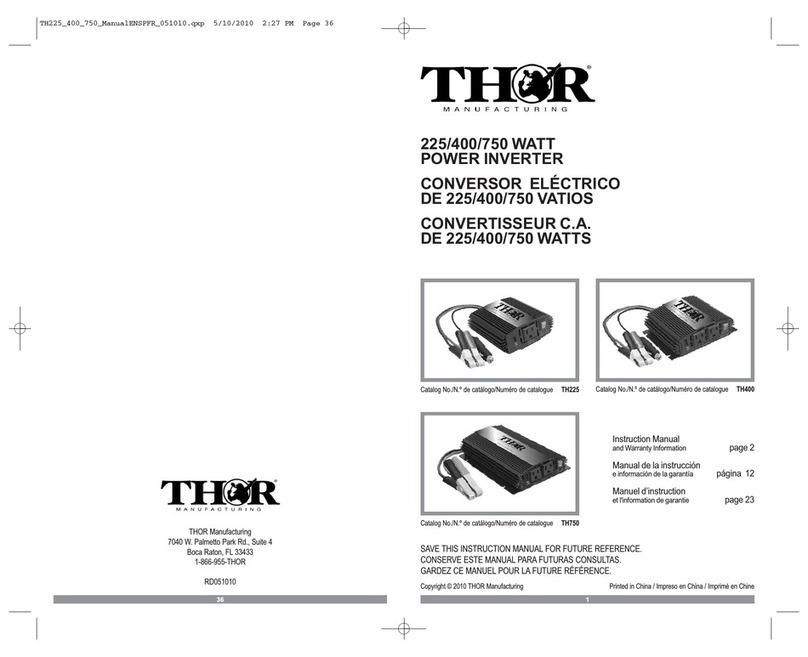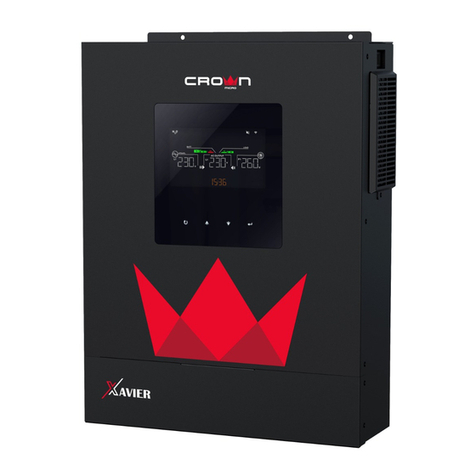
4.1 Error Messages
The error messages shown below will be displayed on the PV Master App or reported by e-mail if
an error occurs.
04 OTHER
The sequence of the on-grid wire is incorrect The inverter has detected that the phase angles of L2 and L3
are reversed The L2 and L3 cables are connected in reverse order.
ERROR MESSAGE EXPLANATION REASON SOLUTIONS
Check (use a multimeter) if there is a measurable voltage (it should normally be close to 0 V) between the earth and the inverter frame. If there is a
measurable voltage, this means the neutral and ground cables are not connected well on the AC side. If this happens only in the early morning, at
dawn, or on rainy days with higher humidity and recovers quickly, this may be a normal situation.
Check (use a multimeter) if there is high voltage (which should normally be less than 10 V) between the N and PE cables on the AC side. If the voltage
is greater than 10 V, this means the neutral and ground cables are not connected well on the AC side or it may be necessary to restart the inverter.
1. Check (use a multimeter) to see if the AC side has any voltage present. Make sure that grid power is available.
2. Make sure that the AC cables are connected tightly.
3. If all appears to be working well, please turn off the AC breaker and turn it on again in 5 mins.
1. Make sure the safety country of the inverter is set correctly.
2. Check (use a multimeter) if the AC voltage (between L and N) is within the normal range (also on the AC breaker side)
a. If the AC voltage is high, make sure that the AC cable complies with the requirements stated in the User Manual and that the AC cable is not too long.
b. If the voltage is low, make sure the AC cable is connected well and that the jacket of the AC cable is not compressed into the AC terminal.
3. Make sure that the grid voltage in your area is stable and is within the normal range.
1. Make sure the safety country of the inverter is set correctly.
2. If the safety country setting is correct, please check the inverter display to see if the AC frequency (Fac) is within the normal range.
3. If an FAC failure only occurs a few times and is resolved quickly, this condition could be caused by occasional grid-frequency instability.
1. Attempt to decrease the ambient temperature.
2. Make sure that the installation complies with the instructions in the inverter User Manual.
3. Attempt to shut down the inverter for 15 mins and then start it up again.
1. Use a multimeter to determine if the resistance between the earth and the inverter frame is close to zero. If not, please ensure that the connection
is good.
2. If the humidity is too high, an isolation failure may occur.
3. Check the resistance between PV1+/PV2+/BAT+/PV- to earth. If the resistance is less than 33.3 kΩ, check the system wiring connections.
4. Attempt to restart the inverter. Check to see if the fault still occurs. If not, it means that the fault was caused by an occasional event. Alternatively,
contact the after-sales department.
Try to restart the inverter. Check if the problem recurs. If not, this was an occasional occurrence. Otherwise, contact the after-sales department
immediately.
Try to restart the inverter. Check if the problem recurs. If not, this was an occasional occurrence. Otherwise, contact the after-sales department
immediately.
Try to restart the inverter. Check if the problem recurs. If not, this was an occasional occurrence. Otherwise, contact the after-sales department
immediately.
Try to restart the inverter. Check if the problem recurs. If not, this was an occasional occurrence. Otherwise, contact the after-sales department
immediately.
Decrease the backup loads to make sure the total load power is lower than nominal backup output power (please refer to page 11).
Public grid power is not available (e.g.
power has been lost or the on-grid
connection has failed)
The PV or BAT voltage is too high
The ground leakage current is too high
The total voltage (open-circuit voltage) of each PV string
is higher than the maximum DC input voltage of the
inverter or the battery voltage is higher than the
maximum BAT input voltage of the inverter
Utility Phase Failure
Utility Loss
VAC Failure
Isolation Failure
Ground Failure
Relay Check Failure
The grid voltage is not within the
permissible range
The grid frequency is not within the
permissible range
The temperature inside the inverter is
too high
Self checking of the relay has failed
Internal communication has failed
The BUS voltage is too high
The backup side is overloaded
The inverter has detected that the AC voltage is beyond
the normal range required for safety in the country of use.
The inverter cannot detect a connection to the grid
The inverter has detected that the grid frequency is beyond
the normal range required for safety in the country
The inverter's working environment has led to a
high-temperature condition
The ground insulation impedance of
the PV string is too low
Isolation failure could be due to multiple causes such as
the PV panels are not grounded well, the DC cable is
broken, the PV panels are old, or the ambient humidity is
relatively high, etc.
The neutral and ground cables are not connected well
on the AC side or this may be an occasional failure
The inverter has detected a high DC component in the AC
output
This is caused by a strong external magnetic field, etc.
This is caused by a strong external magnetic field, etc.
The total backup load power is greater than the nominal
backup output power
A ground failure can be due to multiple causes such as
the neutral cable on the AC side is not connected well or
the ambient humidity is relatively high, etc.
/
/
/
DC Injection High
EEPROM R/W Failure
SPI Failure
DC Bus High
Backup Overload
FAC Failure
PV/BAT Overvoltage
Over Temperature
1. Check if the PV string Voc is lower than the Max PV input voltage of the inverter. If the Voc of the PV string is high, please decrease the number of
PV panels to make sure that Voc is within the maximum DC input voltage range of the inverter.
2. Check if the battery voltage is lower than the maximum battery input voltage of the inverter. If the battery voltage is high, please decrease the
number of battery packs to make sure the voltage is within the maximum battery input voltage range of the inverter.
22
21






















